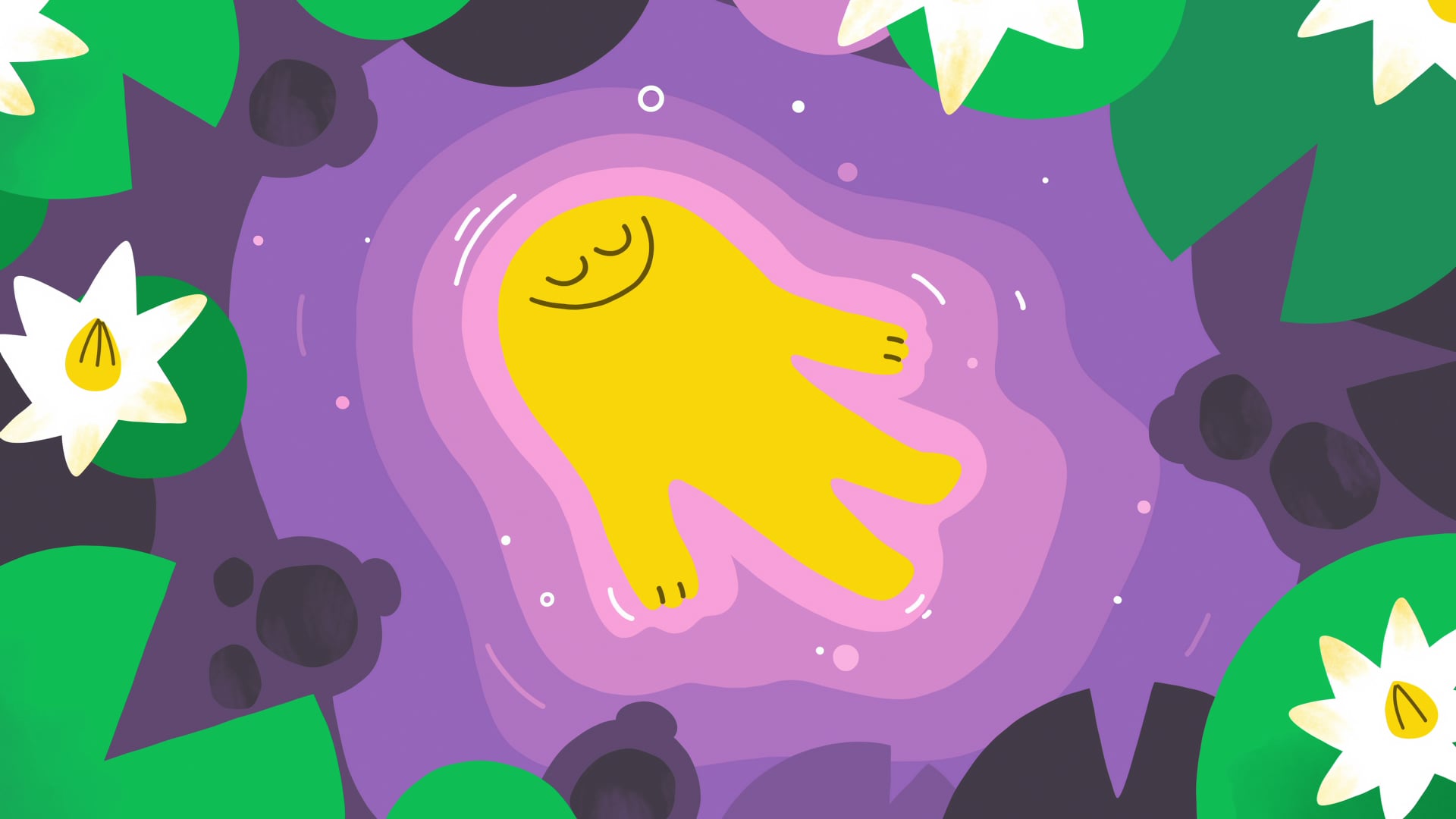
When you think of meditation, you might picture people sitting cross-legged on the floor, breathing deeply with their eyes closed and their minds empty. While some meditation is practiced this way, the Headspace app has made it a mission to demystify this ancient practice and make it accessible to everyone. Now, the Netflix series Headspace Guide to Meditation, hosted by Andy Puddicombe, encourages viewers to incorporate meditation into their daily lives by explaining the technique’s benefits and including a practice meditation at the end of each episode.
I watched all eight episodes of the series to see if meditation might be right for me. If you’re wondering whether or not to give it a try, here are five things Headspace taught me about meditation that helped me see it differently.
1. Meditation Is Not Just Sitting Quietly on the Floor
Some meditation looks like this, but meditation can also be practiced with your eyes open or while lying down. Headspace defines meditation as a skill for training your mind that creates a greater sense of calm. You can meditate by yourself or with other people, and it’s not about controlling your mind or changing it in any way. Instead, it’s about focusing your energy, attention, and thoughts in a relaxing but present way.
2. There’s More Than One Kind of Meditation
“Meditation” is actually a collection of mindfulness techniques that can help you cope with or find solutions for different problems in your life. The Headspace guide introduces viewers to eight different styles of meditation, one per episode. You might like all eight and continue to use them regularly, or find that only one or two really work for you. Meditation is meant to be personal, so it’s all about finding what helps you breathe easier.
3. There Is Actual Science Behind Meditation
In each episode, Puddicombe introduces another way that meditation can improve your life that’s backed up by a scientific study. Throughout the series, he explains that meditation has been shown to reduce stress, anxiety, aggression, negative thoughts about body image, and more. Meditation is also thought to increase neuroplasticity, or the flexibility and structure of your brain. It helps people feel calm and makes space for gratitude, kindness, and compassion.
4. Meditation Isn’t All Self-Reflection
Some parts of meditation do encourage people to look within themselves and examine their own thoughts and feelings. But Puddicombe also takes viewers through meditations that encourage you to imagine how other people you know would think and feel in certain situations. This helps build compassion and empathy for others, even people you don’t get along with. The mind tends to be very critical of itself and others. Reducing this judgmental mindset can make you feel happier and help you channel your anger and resentment into something healthier.
5. Practice Makes Perfect
Meditation isn’t something you only do once or twice. To experience any of the above benefits in your own life, you have to commit to meditating regularly. It’s a skill, and that means it needs to be strengthened just like any other skill. So if meditation doesn’t come easily to you at first or you don’t feel like it’s doing anything for you, just keep going. The more time and energy you spend practicing it, the better you’ll feel.
I have meditated a few times before, and I never thought it was very helpful. But after watching Headspace’s guide, I am now more convinced of the practice’s benefits. I’m always looking for more self-care tools to add to my arsenal, and meditation might just be the missing strategy I’ve been looking for. If you’re skeptical, I recommend watching the first 20-minute episode and trying the meditation exercise at the end. Go into it with an open mind — you might just be surprised at what you can accomplish!
